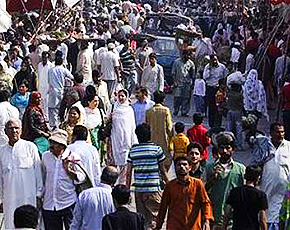
Academics, politicians, practitioners, and think-tank groupies gathered Wednesday in Washington, DC, to explore the challenges facing Pakistani cities, which are turning cities into urban waste lands instead of becoming engines for economic growth. The Woodrow Wilson International Centre for Scholars hosted a one-day conference on the rapid urbanisation in Pakistan. Washington’s Pakistan watchers and minders showed up to hear presentations on what ails cities in Pakistan and what solutions, if any, are available to arrest the decay of large and small cities.
The urban rot is spreading fast in Pakistan. Waste littered streets, gridlocked roads, violence infested neighbourhoods, entrepreneurship deprived markets and disillusioned youth regrettably characterise what is urban in Pakistan. Add to this the unplanned expansion of cities at the urban fringe and the unsanctioned building extensions in the urban core, and the scope of the urban mess appears to become clearer. While the urban dwellers live through the mess we call cities, the political and bureaucratic leadership still appears to be ignorant of what is needed to reverse these trends. Worse, they are willing to jump on any fad that the donors push their way. Over the years, Pakistan has been subjected to numerous experiments in the name of urban development, yet the outcome has seldom been positive.
While much of what is wrong with the cities today is a result of decades of poor planning and a lack of citizenship among urban dwellers, other extenuating factors were at play from the very beginning. Truth be told, urban Pakistan started off on the wrong footing from day one. Millions of refugees showed up in 1947 to settle in urban centers in Pakistan. Over a course of few months in 1947 the population of what is Pakistan today experienced a net increase of 1.8 million. This was a drastic 6.3 per cent increase in the population.
The 1951 census revealed the extent of demographic pressures imposed on cities like Karachi, Lahore, and Hyderabad. Consider that in 1951, 48 per cent of the urban population in Pakistan comprised of refugees from India. The population of Karachi and Hyderabad increased by 150 per cent during 1941 and 1951. Cities in Punjab saw their populations swell by 90 per cent to 150 per cent during the same time period. With every second city resident being a refugee, Pakistani cities underwent drastic cultural transformation that laid the foundations for urban fissures that have risen to the surface.
Unlike cities in Punjab and Sindh, Peshawar experienced a decline in urban population because of the departure of Hindus and Sikhs who were not replaced by migrants from India. Thus Peshawar and Quetta were able to avoid the crush brought about by the influx of refugees in 1947. This, however, changed in the 70s when 3.7 million Afghan refugees, escaping the civil war, showed up in Peshawar and Quetta. Most never left.
The advent of Afghan refugees had a huge impact on the socio-cultural makeup of Peshawar and Quetta. Before the Afghan refugees crossed over the Torkham border, Peshawar’s population increased at an annual rate of 1.9 per cent in the 60s. With the advent of Afghan refugees in the 70s, the population growth rate in Peshawar grew to an unsustainable level of 9.2 per cent per year. Quetta underwent a similar transformation. Its annual population growth rate jumped from 3.4 per cent in the 60s to 7.2 per cent in the 70s. Within a short span of a few years, the population of these cities doubled. With limited resources, these cities stood no chance of ever coping with the additional demand for services and infrastructure.
While millions of refugees alone were sufficient to wrong-foot urbanisation in Pakistan, other factors were equally instrumental in accelerating population pressures in urban centers. The green revolution in the 60s increased crop yields by introducing mechanised farming. This rendered surplus a large number of farm workers who relocated to cities searching for alternative appointment. At the same time, the government encouraged industrialisation in urban centers that further attracted workers to urban centers. Furthermore, advancements in public health resulted in reducing mortality rates from diseases such as cholera and malaria, which further contributed to an increase in population.
In the past 10 years, cities have experienced additional influx of millions of internally displaced people, who found refuge in cities from civil wars, earthquakes, and floods. Such an unpredictable flow of millions to urban centers would paralyse governance in a city with resources, let alone one that lacks it.
- All figures about migration in 1947 and about the Afghan refugees have been taken from publications by Arif Hassan.











































